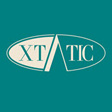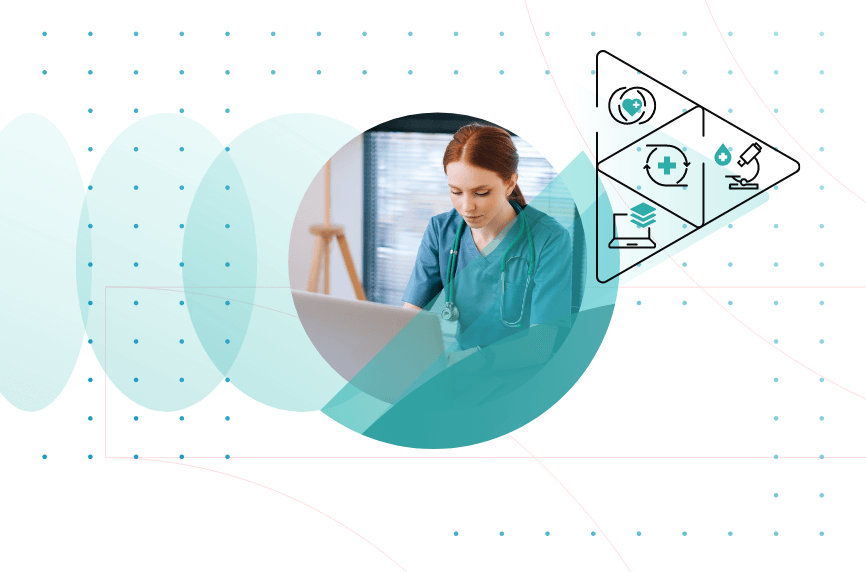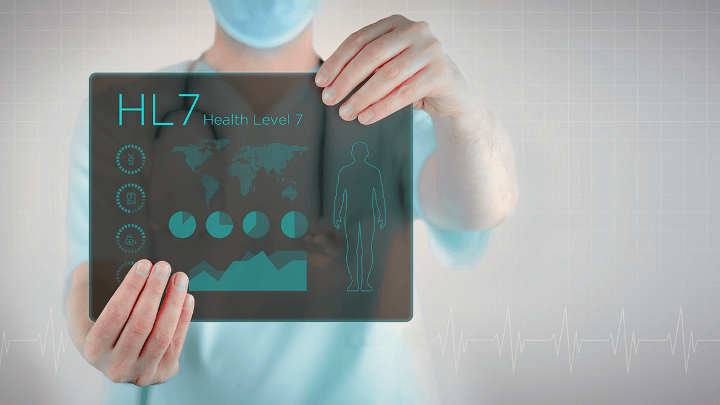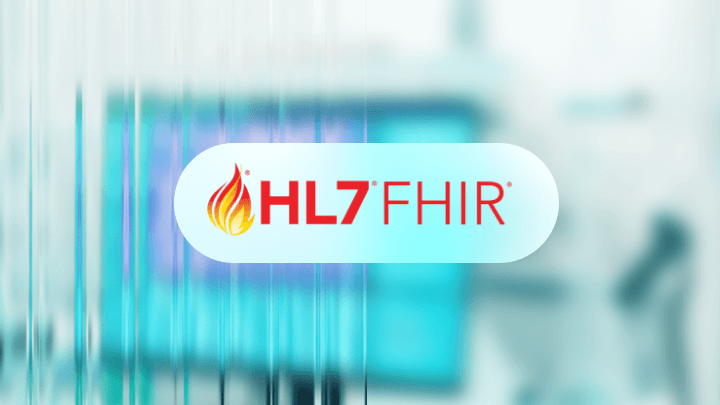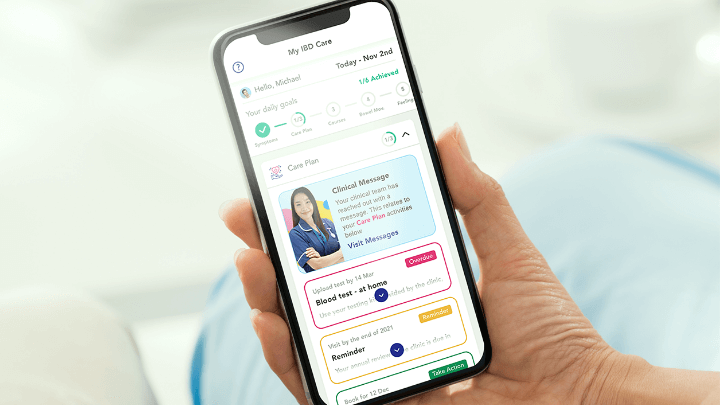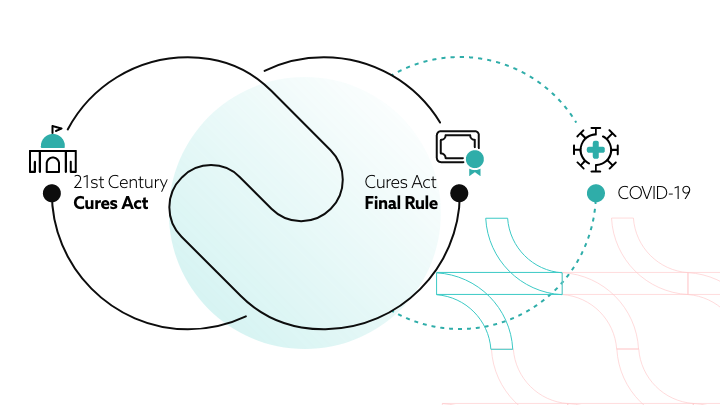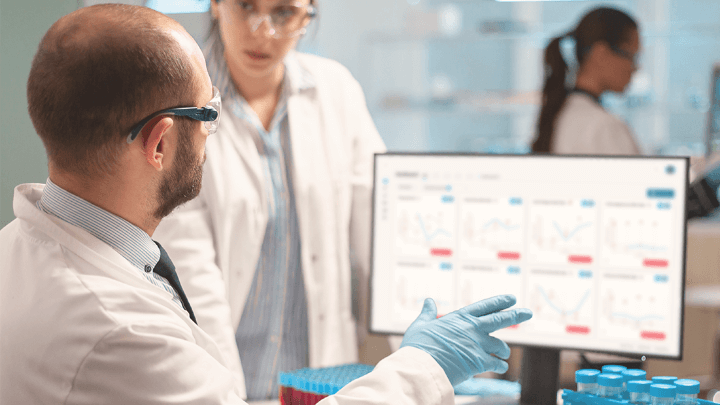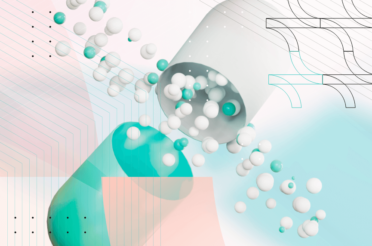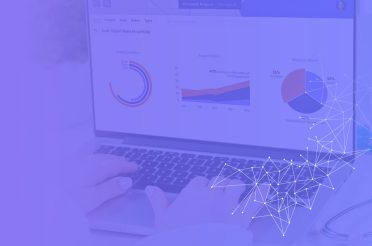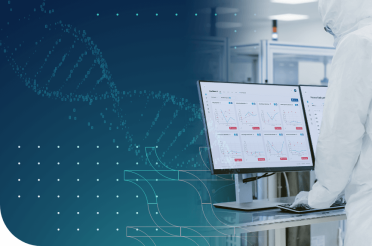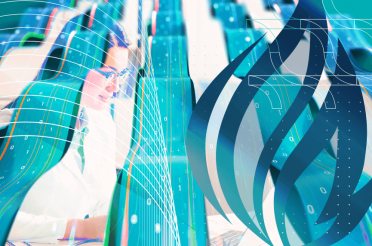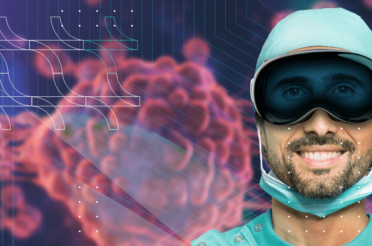From making better-informed decisions and improving population health through performing advanced medical research to saving costs and meeting compliance, health data seems to be the most valuable asset of healthcare organizations. And the constant information exchange is a critical factor for the adequate functioning of the medical industry.
This is why in the late 80s of the last century, healthcare institutions developed a set of standards called Health Level 7 (HL7) to facilitate patient data exchange between systems of different medical providers. Continue reading and understand the crucial standards and technologies that aim to bring health data closer to patients.
What is HL7?
Health Level Seven International (HL7) is a non-profit organization that developed the first set of standards in the healthcare industry that were later adopted by the American National Standard Institute. In simple words, HL7 is a framework that allows various healthcare software solutions (EHR systems, clinical and management software) to integrate and share information.
The HL7 standards provide guidelines and methodologies that enable systems to communicate. They ensure that data-sharing norms and health data definitions related to clinical documentation, medical records, quality reporting, etc., are consistent across systems.
Integrating the healthcare enterprise (IHE) is another initiative aiming to enhance the information-sharing process between computer systems. It promotes the optimal use of HL7 standards in order to improve care delivery.

Transform the healthcare delivery of your services with new technology
Take the first step towards a more interconnected healthcare environment by learning more about HL7 and APIs together with BGO Software’s team of experts.

HL7 standards
HL7 focuses on the application layer of the International Organization for Standardization/Open Systems Interconnection (ISO/OSI) model, which enables the electronic exchange of healthcare information between systems. Standards solve interoperability problems and ensure smooth communication between software solutions.
Here are some of the primary HL7 standards you may encounter:
- HL7 v2.x is the most widespread standard for messaging in healthcare. It defines the structure and content of messages that can be used for exchanging information, orders, and other data types between multiple systems.
- HL7 version 3 (v3) is far more flexible than HL7 v2.x, as it is designed to support the data exchange across a wide range of healthcare scenarios—from primary care to specialized care.
- Clinical Document Architecture (CDA) defines the structure and content of clinical documents (discharge summaries) that can be exchanged between healthcare information systems.
- Structured Product Labeling is an XML-formatted standard defining the human prescription drug labeling content.
In order to fully understand the architecture and application of HL7 standards, you should distinguish the following terms:
- Standards are a set of specifications, guidelines, or rules developed to ensure the consistency and interoperability of systems. HL7 standards define the structure, content, and format of healthcare data (data elements) exchanged between systems.
- Variants. HL7 variants refer to a specific implementation or HL7 version of a standard. Within the HL7 v2.x standard there are HL7 v2.1, HL7 v2.2, HL7 v2.3, etc. These variants aim to meet the specific needs of a healthcare setting.
- Protocols. HL7 protocols are a set of rules that govern how systems should connect, how data should be transmitted, and how errors should be handled. HL7 security protocols, such as Virtual Private Network (VPN), are used to transmit and receive messages that conform to HL7 standards.
- Interface. HL7 interface refers to the technical means by which the different systems communicate and exchange information. An HL7 interface can include software programs, middleware, or other technologies designed to translate data between systems and ensure that the information is formatted and transmitted correctly according to the HL7 protocol.
As mentioned above, HL7 v2.x is the most widely adopted standard by healthcare providers, and data exchange usually follows this pattern:
- The doctor types health data in the electronic health record system.
- The data is converted into an HL7 v2.x format.
- The HL7 v2.x formatted information is then transmitted between systems (an EHR system and a laboratory system) over the Internet or using secure file transfer protocols.
- The receiving application validates the data, checking for errors or inconsistencies.
- Once the data is validated, it is processed by the receiving system and stored in its database.
- Information is archived for future reference and analysis by authorized healthcare professionals working in the medical facility.
The emergence of Fast Healthcare Interoperability Resources (FHIR)
As we mentioned above, Health Level Seven International develops different HL7 standards that try to upgrade and address the challenges of the ones before. They are designed to be flexible to accommodate various use cases. However, too much flexibility makes it difficult to ensure the interoperability, security, and consistency of the data exchanged.
While HL7 promotes interoperability between different healthcare systems, in practice, achieving true interoperability can be challenging. This is because healthcare systems may use different versions of HL7 or implement the data standards differently.
HL7 standards are complex and hard to maintain, which might be a massive problem for small organizations with limited resources. Furthermore, data may be incomplete, inaccurate, or not in the correct format, which can lead to errors and inconsistencies.
Fast Healthcare Interoperability Resources is a recently-developed standard by Health Level Seven International that enhances the information exchange between different healthcare information systems. FHIR manages to find the balance between flexibility and standardization, as it is modular and based on top-notch web technologies and provides guidelines, best practices, and security features.
What makes FHIR better than other HL7 standards?
FHIR is built on a set of modular, reusable resources that can be combined in different ways to adapt to new use cases, technologies, and healthcare scenarios. These perks make it easier to implement and customize than previous HL7 standards. Additionally, FHIR is more efficient, using less data and bandwidth than the HL7 standards.
FHIR provides a set of RESTful (Representational State Transfer) web-based application programming interfaces (APIs) that allow different systems to interact with each other and access patient information in real-time. This functionality is a leap forward for improving care coordination and enabling new care models.
FHIR also includes security and privacy features built-in, making it easier for organizations to comply with regulations and guidelines for data sharing, security, and patient privacy. Furthermore, FHIR is designed to be forward-compatible with future developments in healthcare information technology, and it has a wider range of use cases than HL7 v2.x.
It is important to note that FHIR is not meant to replace older HL7 standards but to complement and work alongside them (it is backward compatible). This new framework aims to address some limitations of previous HL7 standards and provide a more modern and flexible way to exchange healthcare information.
What Does API Stand for in Healthcare?
After we discussed the basics of data exchange in the healthcare setting, we can proceed with the technology that changed the industry in recent years. API, at its core, is a set of rules and protocols allowing healthcare applications to communicate and exchange data.
In healthcare, APIs enable medical institutions to utilize systems from different vendors to share patient information (electronic health records, lab results, and other clinical data). APIs play a crucial role in achieving full interoperability, as it allows systems to communicate using a common language and structure.

Make the implementation of HL7 and APIs a worthwhile investment
Get access to expert insights on how HL7 and APIs can transform your healthcare practice.
This seamless flow of information between EHRs, billing software, and other systems offers various benefits for healthcare providers and patients. Furthermore, APIs allow medical organizations to access patient data from multiple sources and make more informed decisions about patient care. They also enable the development of new care models and innovative healthcare solutions.
Developers utilize APIs to build the functionalities of two primary types of applications. The first one, patient-facing apps (patient portals, telemedicine platforms, etc.), are meant for patients.
They allow them to access personal medical information and communicate with their healthcare providers. Vice versa, provider-facing apps (electronic health record (EHR) systems, practice management systems, etc.) serve the needs of healthcare providers related to administrative and clinical workflows.
Catalysts of APIs implementation
The 21st Century Cures Act (2016) and Cures Act Final Rule (2020) are the critical factors that motivated healthcare institutions to invest in seamless information sharing. The latter requires IT providers to develop standardized APIs that enable data exchange between software systems based on the FHIR standard.
Furthermore, healthcare providers can use standardized APIs to connect to patient-facing and provider-facing apps. These two acts motivate medical institutions to implement APIs to achieve greater interoperability and provide seamless access to electronic health information.
Believe it or not, the COVID-19 pandemic also affected in a positive direction the development and use of apps for patient communications and virtual care. The spread of the virus is a major catalyst for the increased development, interest, and investment in applications for telehealth, patient portals, etc.
Healthcare providers find such technology efficient in terms of productivity and cost-savings, which motivates them to explore its potential.
API use cases in healthcare
APIs can be used in a variety of ways in healthcare to improve the quality of care and reduce costs.
Electronic Health Records (EHR) integration
APIs may allow different EHR systems (or clinical applications) to communicate and share health information, such as demographics, medications, allergies, lab results, etc. Third-party integrations, remote access through web apps, patient portals, and automation of manual entry are just some of the benefits and functionalities APIs may bring to EHR systems.
Clinical decision support
APIs may retrieve data from different data sources (clinical guidelines, drug databases, medical literature, etc.) to provide medical institutions with cohesive data, facilitating decision-making. This way, healthcare institutions utilize reliable sources to improve the quality of care.
Population health management
APIs allow healthcare providers to analyze patient data from multiple sources, such as EHRs, claims, etc., to identify high-risk patients and improve the health of a population.
APIs such as Bulk FHIR may be used for collecting essential patient data from different systems for population health purposes. Furthermore, health applications utilizing Bulk FHIR APIs may provide automated processes to manage data required for registry reporting.
Telemedicine
APIs allow remote consultations and enable patient information exchange between healthcare providers and patients in different locations. APIs connect video conferencing platforms with EHR systems, allowing medical professionals to conduct virtual consultations with patients remotely and securely.
Remote patient monitoring (RPM)
APIs support remote monitoring devices to enable the exchange of patient information between devices and systems.
For example, an application that allows patients to track their vital signs can use an API to securely send that information to an app used by the medical provider. Furthermore, APIs may connect wearable devices and other RPM tools to EHR systems, allowing medical providers to monitor patients in real-time.
Challenges APIs implementation currently faces
Healthcare IT developers play a crucial role in the implementation, integration, and use of APIs and apps, as most medical institutions do not have expertise.
There are some challenges that most healthcare providers might face when integrating APIs:
- The lack of available standardized API functionality causes delays in time to finish the software product providers want to build.
- Poor communication between the IT team and medical workers, and underperforming project management, are common problems in developing a complex software solution.
- Lack of available or sufficient documentation, guidance, and support affects the quality of the final product, which might not meet shareholders’ expectations.
- Healthcare organizations have a shortage of resources to implement, manage, and maintain APIs and applications.
- Governance models for APIs and apps might be limited for many organizations in healthcare.
- Data quality and mapping are challenges that cause delays in implementing APIs. Healthcare providers need to investigate the IT developers’ data mapping to ensure accuracy based on workflows and documentation practices.
Benefits that are worth investments
The healthcare industry has come a long way from the implementation of the first H7 standards to the cutting-edge APIs to ensure a seamless health data flow that offers many benefits.
Improved patient care
APIs’ functionality and HL7 standards help healthcare providers to make more informed decisions, avoid duplicative tests and treatments, and improve patient outcomes. As APIs enable the exchange of information between different healthcare providers and systems, medical providers may improve care coordination, leading to more efficient use of resources.
Increased efficiency
By allowing systems to communicate and exchange information in real-time, APIs and the HL7 framework improve workflows and reduce delays in care. This standardization enables different systems to understand and interpret the data in the same way, reducing the need for custom integration and reducing errors.
Workflow automation
HL7 standards can help enhance interoperability and transmit data whether the systems use older communication paradigms or modern APIs. Additionally, HL7 standards and APIs can serve as a tool for workflow automation, as they structure and share data in a clear way, thus simplifying the information exchange process.
Compliance
APIs and HL7 standards can help healthcare organizations to meet regulatory compliance by providing secure access and sharing of patient data. This way, healthcare organizations comply with regulations such as the Health Insurance Portability and Accountability Act (HIPAA), which protects patient privacy.
Interoperability
APIs and HL7 standards ensure that different software can communicate and exchange information in a consistent and interoperable way. The seamless information flow is essential for the efficient functioning of health systems.
Cost-effectiveness
Interoperability and automation are some of the perks of the HL7 framework and APIs that ensure cost-effectiveness. Furthermore, these driving forces reduce costs by avoiding duplicative tests and treatments and enabling the more efficient use of resources.
Scalability
APIs and FHIR can allow healthcare organizations to scale their services to meet the needs of the growing patient population and to integrate new technologies and services into their existing systems. Thus, medical institutions can easily adapt to changing healthcare settings.
Inspire innovation
APIs’ function is to provide access to different data sources, and this way, they inspire the development of new healthcare solutions and care models. From integrating AI and machine learning to implementing remote patient monitoring technology in healthcare, APIs functionalities do not leave much to be desired.
Collaboration
HL7 standards (FHIR) create a unified guideline for all healthcare market players, including private clinics, state hospitals, laboratories, and healthcare software providers. Thus, they can cooperate to enhance productivity and operations and deliver better patient outcomes.
Since the 80s, HL7’s standards have been the international protocol for exchanging healthcare data, and this mature framework isn’t going anywhere anytime soon. It has helped to improve care delivery by optimizing workflows, reducing ambiguity, and enhancing knowledge transfer between EHR vendors, patients, healthcare providers, and other parties.

Whether you’re a startup, a Fortune 100 company or a government organisation, our team can deliver a solution that works for you.
BGO Software
With the emergence of HFIR and APIs, the medical industry might finally meet full interoperability between systems and applications, which may unleash the potential of breakthrough technologies. However, utilizing such technologies and standards requires support from a trusted IT partner, otherwise, you would waste time and money.
